Are you planning a camping trip and just realized you forgot your home camper key? Or maybe you lost your key while exploring the wilderness.
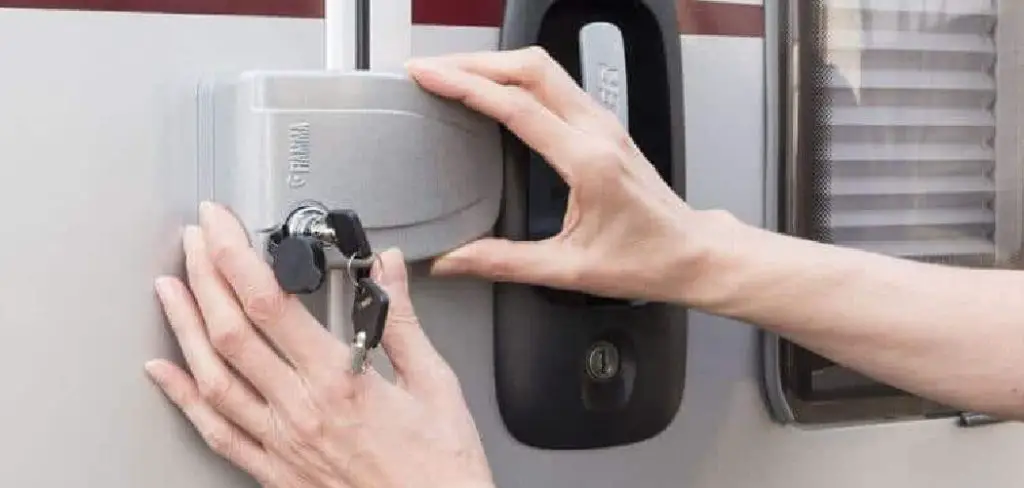
How to unlock a camper door without a key can be a daunting task, especially when you’re eager to start your adventure or return to the comfort of your mobile home. Whether you’ve misplaced your key or it’s become lost in the shuffle, several techniques can help you gain entry without causing damage. While having a spare key on hand is always best, knowing some alternative methods can be beneficial during emergencies.
In this guide, we’ll explore a variety of safe and practical approaches to unlocking a camper door without a key, ensuring that you’re prepared for any situation that may arise.
What Will You Need?
Before attempting any of the methods listed below, having the necessary tools and materials is essential. Here are a few things you’ll need:
- A screwdriver or drill
- A thin piece of metal, such as a wire hanger or credit card
- A slim Jim or other lock-picking tool (optional)
- Patience and persistence
Once you have everything ready, it’s time to unlock your camper door without a key.
10 Easy Steps on How to Unlock a Camper Door Without a Key
Step 1: Assess the Lock Type
Understanding the type of lock installed on your camper door is crucial to determining the most effective method for unlocking it without a key. Camper locks vary significantly, ranging from simple latch locks to more complex ones like deadbolts or electronic keypad locks. By identifying the lock type, you can avoid using methods that may be ineffective or potentially damaging the lock mechanism. Start by closely examining the lock for any visible markings or brand names, as these may provide a clue about its model.
Additionally, consider the location of your camper’s lock—whether on a side door, back door, or storage compartment, as this might also influence the unlocking approach. Understanding the equipment you’re dealing with sets the foundation for bypassing the lock without causing unnecessary harm.
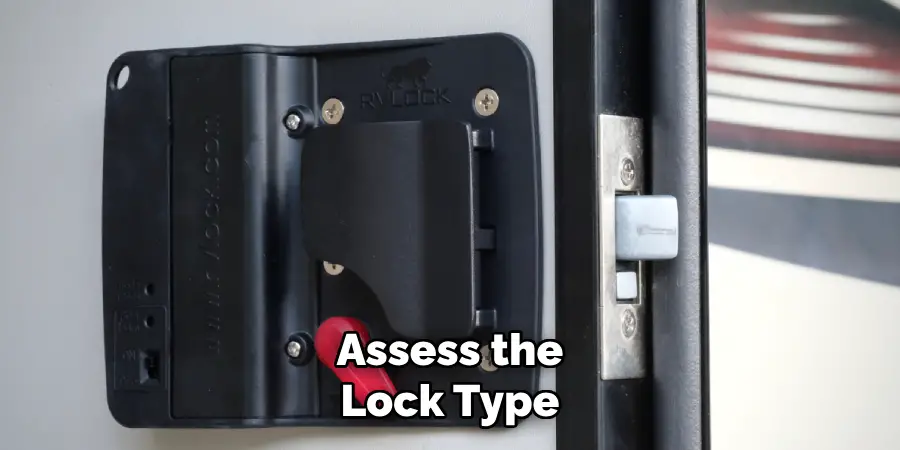
Step 2: Try the Credit Card Method
The credit card method is a classic technique for unlocking a simple latch lock, especially effective on older camper doors without additional security features. Start by selecting a flexible but sturdy card you don’t mind potentially damaging, like an expired gift card or membership card. Insert the card into the space between the door and the frame, angling it towards the latch.
Apply gentle pressure while wiggling the card back and forth, attempting to push the latch back into the door. If done correctly, this movement will slide the latch, allowing you to open the door. This method works best when there’s a slight gap in the door, allowing room to maneuver the card. However, it’s important to remember that while effective on basic latches, this method won’t work on deadbolts or electronic locks.
Step 3: Utilize a Slim Jim
A slim jim is a long, flat piece of metal designed to unlock car doors but can be effective on sure camper locks as well. To use a slim jim, carefully slide it between the door and the weather stripping, aiming for the location where the lock mechanism engages. Maneuver the tool gently to hook onto the latch or control arm. Slowly lift or move the slim Jim to unlock the door.
It’s crucial to exercise caution, as improper use can damage the lock or door mechanism. This method is generally more effective on older or simpler lock designs and may not work on campers with advanced locking systems. If you’re uncomfortable using a slim jim, consider seeking professional assistance to prevent unintended damage.
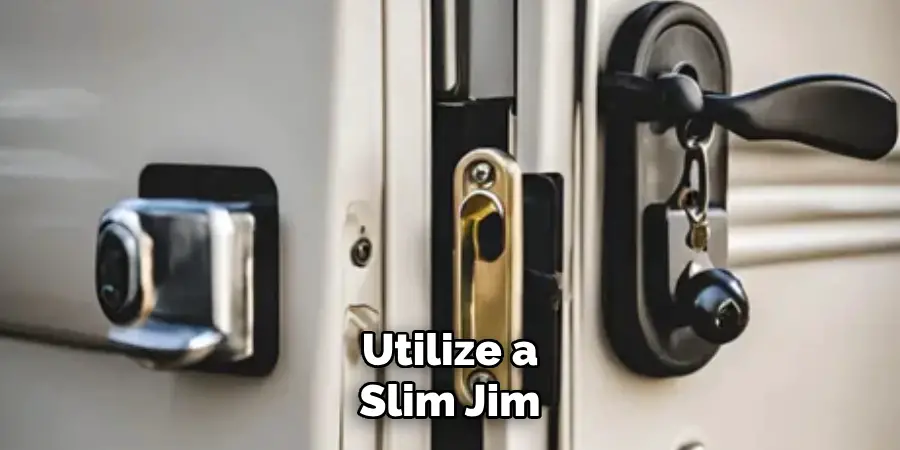
Step 4: Use a Wire Hanger
If a slim Jim is unavailable, a wire hanger can be an alternative tool for entering your camper. Begin by straightening the hanger, leaving a small hook at the end. Carefully slide the hanger between the door and the frame, targeting the location where the lock mechanism is positioned. Once the hanger is inserted, manipulate it with small movements to catch the latch or control mechanism inside the door.
This process may require patience and finesse, as the space is often narrow, and the mechanism can be tricky to engage. Ensure you apply minimal force to prevent damage. This method may not be suitable for all lock types, particularly those with more sophisticated security features, but it can be an effective solution for campers with simpler locking mechanisms.
Step 5: Attempt to Pick the Lock
Lock picking is a more advanced technique involving specialized tools to manipulate the lock’s internal mechanisms directly. This method requires a lock pick set, typically including a tension wrench and various pick tools. Begin by inserting the tension wrench into the lock’s keyhole and applying slight rotational pressure as if trying to turn the key. With the wrench in place, use the appropriate pick tool to feel for the pins inside the lock. Push each pin until it clicks into the correct position, maintaining consistent pressure on the tension wrench.
As you set each pin, the lock will eventually turn, and you can rotate the tension wrench to unlock the door. This method demands precision and a degree of skill, so it may be necessary to practice or call a professional if you’re inexperienced in lock picking.
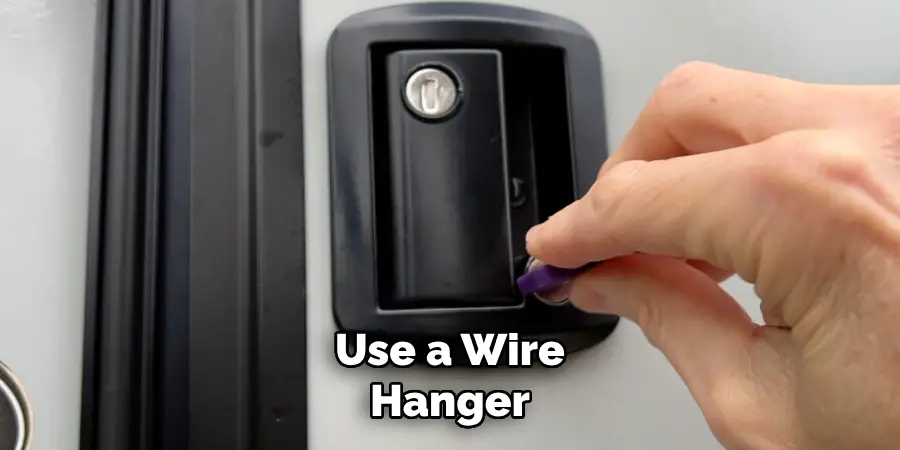
Step 6: Try a Drill Method
The drill method should be considered a last resort due to its destructive nature. If all other non-invasive techniques fail or you urgently need access, drilling can be an option to force the lock open. Before proceeding, ensure you’re fully aware of potential damage to the lock and the need for replacement. Start by selecting a drill bit that matches the size of the lock’s cylinder.
Align the drill bit with the center of the lock, applying steady pressure to bore through the pins within the cylinder. Drilling will ultimately break the lock’s internal mechanism, allowing you to turn the cylinder with a screwdriver to open the door. It’s crucial to perform this step cautiously and to consider seeking professional help if you’re uncertain about handling power tools safely.
Step 7: Contact a Locksmith
If all previous methods have not yielded success, or if you’re concerned about causing damage to your camper’s lock, contacting a professional locksmith is a viable and often the safest option. Locksmiths have the expertise and tools to handle a wide range of locks without causing damage.
When reaching out, provide the locksmith with detailed information about your camper and the specific lock type. Some locksmiths offer mobile services, which can be particularly convenient if you’re stranded. Although this option may incur additional costs, the peace of mind and assurance of professional service can outweigh the risks and damages associated with trying to unlock the camper door yourself.
Step 8: Prevent Future Lockouts
After gaining access to your camper, consider preventing future lockouts. Regularly inspect your lock to ensure it’s functioning correctly and lubricate it with an appropriate lock lubricant to maintain smooth operation. Spare keys are a simple yet effective solution—store a copy in a secure location, perhaps with a trusted friend or inside a magnetic key holder attached to the camper’s undercarriage. Additionally, consider upgrading your lock system to one with advanced features, such as a keypad entry, eliminating the need for keys altogether.
Step 9: Explore Alternative Entry Points
Consider checking for alternative entry points if you cannot access your camper through the main door. Many campers have additional doors or windows that might provide another way of entry—examining all doors, storage compartments, and windows to see if any are unlocked or can be accessed without force.
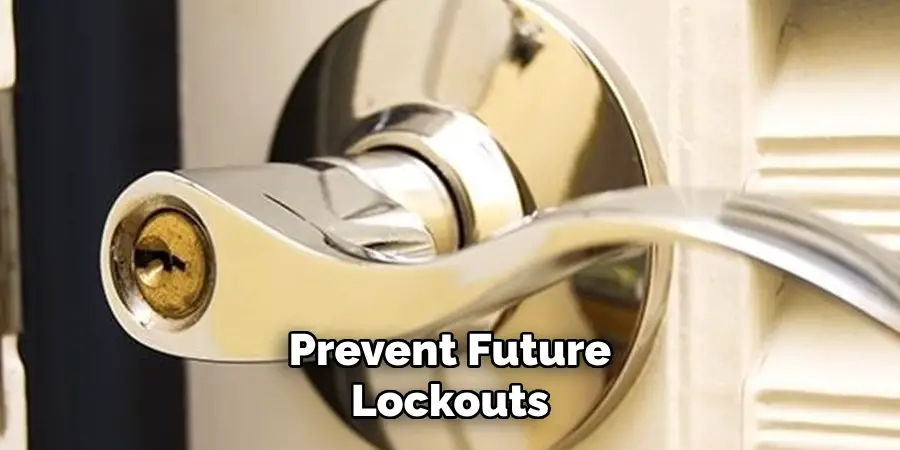
It’s important to use caution when attempting to open windows or other entry points to avoid damaging the camper or compromising its security features. If a window is slightly open, it may be possible to slide it open further to gain entry. Always ensure that the camper is on stable ground before attempting to enter through an alternative route to prevent any accidents.
Step 10: Document Your Experience
Once you’ve successfully regained access to your camper, take a moment to document the experience. Note which methods you tried, what worked, and any challenges you faced. This record can serve as a valuable reference for future situations or help others facing similar lockout issues. If specific tools or techniques were particularly effective, consider sharing your insights in online forums or with fellow campers. Documenting the experience can help you evaluate any potential improvements needed for your lock system or emergency preparedness.
By following these steps, you can effectively handle a lockout situation while camping and gain access to your camper without causing unnecessary damage.
Conclusion
Regaining access to your camper during a lockout situation can be a stressful experience, but with the right approach and tools, it is manageable without causing damage.
The methods described—ranging from noninvasive techniques, such as lock picking, to considering the use of a professional locksmith—each have advantages and considerations. Prioritizing non-destructive options and evaluating the situation carefully can often provide a swift and efficient solution. Additionally, preventive measures, such as regular lock maintenance and having spare keys, can minimize future inconveniences.
Hopefully, the article on how to unlock a camper door without a key, has provided you with useful tips and instructions to handle a lockout situation with confidence. Happy camping!
